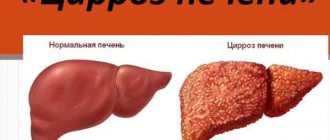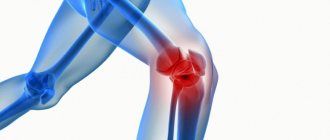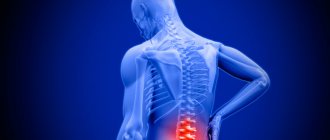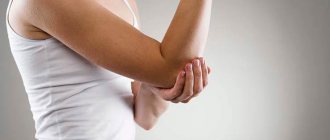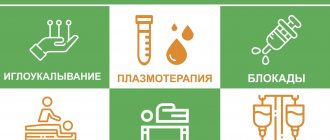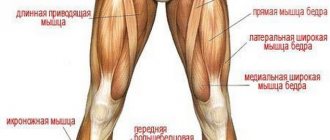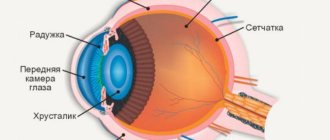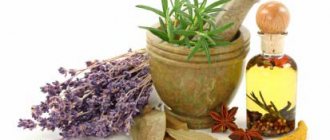Shoulder pain is a fairly common pathology. Moreover, in case of acute pain, a person usually immediately consults a doctor. But some people can ignore mild aching painful sensations, while others drown them out by taking painkillers. Not everyone considers this problem serious, so they do not immediately consult a doctor. But this can lead to limited arm mobility and even complete disability. Indeed, in fact, even mild aching pain in the shoulder can be a symptom of serious pathologies. Without treatment, it will get worse, and it will be much more difficult to get rid of it.
Anatomy
Below we will return to individual details of the anatomy. Now we'll tell you briefly.
The shoulder joint is the most mobile. It provides movement in any direction. Thus, the arm can be moved away from the body to the side and up, brought towards it, raised up, placed behind the head or behind the back, rotated (as movement around its own axis is called) when bent at the elbow.
High mobility is determined by the shape of the joint, which is called spherical. Here the humerus ends in an almost complete “ball”, and it comes into contact with an almost flat “platform” on the side of the scapula (it is called the glenoid cavity). If this articular area were not surrounded on all sides by cartilage tissue, the head of the humerus would “fly out” of the joint with every movement. But this articular “lip,” as well as the ligaments abundantly entwining the articulation of the bones, hold the shoulder in place.
The joint capsule is a tissue formation similar in structure to the ligamentous apparatus. This structure “wraps” each joint, allowing circulation within this enclosed space. The peculiarity of the capsule of this particular joint is that it is wide, creating space for an abundance of movements performed in the joint.
Since the joint makes a lot of movements, it must be surrounded by a large number of muscles, whose fibers will go in different directions and attach their ends to different sides of the humerus, and to the chest, and to the scapula, and to the collarbone. The latter, although not considered part of the shoulder joint, is directly involved in its activity, being an additional support for the humerus rotating in all directions.
The muscles attach to the humerus and radiate from it in different directions. They form the rotator cuff:
- the deltoid muscle is responsible for shoulder abduction;
- subscapularis – for inward rotation of the shoulder;
- supraspinatus - for lifting and abduction to the side;
- teres minor and infraspinatus – rotate the shoulder outward.
There are other muscles, such as the biceps, whose tendon runs inside the joint. Which of them is inflamed can be indirectly judged by which movement is impaired or causes pain (for example, pain that appears when you raise your arm indicates inflammation of the supraspinatus muscle).
All these structures - muscles, ligaments, articular cartilage and capsule - are penetrated by sensory nerves that carry a sensation of pain to the brain if any of the tissues develop inflammation, stretch or rupture.
Here, motor fibers pass from the spine - they carry a command to the muscles to move the limb in one direction or another. If they become pinched between bone or other structures, pain also occurs.
Please note that medical workers refer to the upper third of the arm as the “shoulder” – from the shoulder to the elbow joint. The area from the neck to the shoulder joint is called in medicine the “shoulder girdle” and, together with the structures surrounding the shoulder blade and collarbone, makes up the shoulder girdle.
Folk remedies
Folk remedies that have long been used to treat various diseases are no less effective in relieving pain. But they won’t be able to heal completely – the action is aimed at stopping inflammation and relieving swelling.
Effective recipes for warming rubs:
- Combine: honey, mustard and vegetable oil. Take all ingredients in equal quantities. Before rubbing, heat over hot steam.
- Combine: mustard powder, natural honey and camphor oil. Rub the resulting mixture onto the painful area at night for 2-3 weeks.
- Rub the shoulder with any alcohol tincture: propolis, cinquefoil, aloe, calendula.
- Mix 5 g of propolis with 40 g of pork fat. Before going to bed, rub the injured shoulder.
- Add a mixture of St. John's wort, sweet clover and hops (10 g each) to petroleum jelly (55 g) and, after infusing for two hours, use it for massage.
- Mix: ethyl alcohol - 250 g, camphor - 12 ml, the same amount of iodine and 10 crushed aspirin tablets. Immediately lubricate with the resulting mixture and wrap in a warm blanket.
Infusions and decoctions based on plants and fruits increase immunity and speed up the healing process. Recommended recipes:
- For black currants: take 2 tbsp. l. Crushed leaves and pour boiling water (500 ml). Make an infusion in the evening, drink 1 glass in the morning before breakfast. The remaining volume is extended throughout the day. Good pain reliever.
- From corn silk: infuse plant materials like regular tea (10-15 minutes). Bring to a boil and turn off after 5 minutes. After straining, drink a tablespoon before meals. Helps remove accumulated salt in the joint.
- Nettle tincture: crushed dry herbal raw materials in the amount of 40 g are brewed with boiling water (220 ml) and left for 50 minutes. Take the medicine half an hour before meals, a tablespoon at a time. St. John's wort, which is cooked, has a similar anti-inflammatory effect.
- On lingonberry leaves: steam 15 g with a glass of boiling water. The finished infusion is drunk several sips throughout the day. Effectively relieves inflammation and pain.
Baths with Epsom salts help relieve sharp pain and relieve inflammation. Magnesium in its composition helps relaxation.
More options for therapeutic baths:
- Mustard: dilute dry mustard in a small amount of water (100-120 g of powder), stir until the lumps dissolve. Pour the resulting mixture into a common bath and take it for a quarter of an hour. After completing the procedure, rinse off in the shower, wipe dry with a towel and put on something warm (woolen socks on your feet).
- Saline solution: dissolve salt in warm water (1:10), soak a cloth with it, apply to the sore spot. Tied with a bandage, wrapped with a woolen scarf on top and left for at least 1.5 hours.
Before using traditional medicine, an accurate diagnosis is required. With the wrong approach, you can cause significant harm to health and only worsen the disease.
Why does the shoulder joint hurt?
The causes of pain in the shoulder joint are conventionally divided into 2 groups:
- Pathologies associated with the joint itself and the surrounding ligaments, tendons or muscles. This includes inflammation of the capsule, rotator cuff muscle, joint capsule, cartilage on articulating bones, muscles, tendons or the entire joint, and some non-inflammatory diseases of these same structures.
- Pathologies with extra-articular localization. This group includes osteochondrosis of the cervical spine, inflammation of the sensitive nerve fiber (neuritis) or the entire large nerve, which is part of the brachial nerve plexus (plexitis), chest disease, heart disease or digestive tract, whose inflammation or tumor “radiates” to the area shoulder
Let us consider each of the causes of pain in detail, starting with the first group of pathologies.
Tendinitis (inflammation of a muscle tendon)
Since, as we said, the shoulder joint is surrounded by many muscles, which are attached here with their tendons, therefore, tendinitis can have different localizations. The symptoms of the disease will depend on this.
Common features of any tendinitis are:
- occur most often in those who perform stereotypical shoulder movements (athletes, loaders);
- the pain can be sharp, dull or aching;
- most often the pain in the shoulder area is sharp and occurs for no apparent reason;
- hurts more at night;
- the mobility of the arm decreases (that is, it becomes difficult to abduct, bend, or lift it).
Supraspinatus tendinitis
This is a muscle that is located at the top of the shoulder blade and along a short path reaches the outer part of the humeral head. Its tendon becomes inflamed most often due to injury or if there is chronic inflammation of the bursa lying under the acromion process of the scapula.
Here, the pain in the shoulder either increases or decreases - intermittently. Maximum pain is observed if you move your arm to the side by 60-120 degrees. It will also hurt if you press on the shoulder or pat it.
A complication of untreated tendonitis is incomplete rupture of the tendon.
Biceps tendonitis
This muscle, which is more often called the biceps (the word “biceps” is translated from Latin as “biceps muscle”), performs flexion in the shoulder and elbow joints, it makes it possible to turn the hands with the palms facing up.
Symptoms of this tendonitis:
- recurring pain along the front surface of the shoulder, often radiating down the arm;
- no pain at rest;
- it hurts to bend your arm at the shoulder and elbow;
- pressure on the forearm (the area from the elbow joint to the hand) is painful;
- you can find a point in the area of the head of the humerus, palpation of which causes sharp pain.
This tendinitis can be complicated by a complete rupture or subluxation of the tendon. The last condition is when the tendon slips out of the groove on the surface of the bone in which it should lie.
Infraspinatus tendinitis
This is a disease of athletes and heavy physical labor workers. It does not have pronounced symptoms. Only pain when rotating the entire limb, if you put pressure on the shoulder joint. Such pain is localized not only in the shoulder, but also spreads along the back of the arm to the elbow, and sometimes lower - to the fingers.
A complication of this untreated condition is complete rupture of the tendon.
Rotator cuff inflammation
Here, pain in the shoulder joint is detected when raising the arm up (when you need to reach something or when stretching).
This happens on the second day after a person has worked intensively with his hands, especially if he has not had to do such work before (for example, whitewashing a ceiling). The pain is sharp, severe, and goes away when you lower your arm. At rest it doesn't bother me.
If you conduct an X-ray examination of the shoulder joint, the radiologist will say that he does not see any pathology. The diagnosis can only be made by a traumatologist or sports medicine doctor.
Inflammation of the joint capsule (bursitis) and inflammation of the joint capsule together with adjacent tendons (tenobursitis)
Here, the pain in the shoulder joint is acute, occurs for no apparent reason, limits any movements of the arm, and does not allow a stranger (for example, a doctor) to make passive movements with the affected arm.
Capsulitis (inflammation of the joint capsule)
This condition is rare, so you should think about it last, excluding more serious diseases such as arthritis, rupture of joint ligaments or radiating pain in diseases of the abdominal organs.
Patients with capsulitis of the shoulder joint are more likely to suffer from women 40-50 years old who had to lie down for a long time without moving their arm fully.
Inflammation develops gradually, unnoticed by humans. At some point, he notices that it has become too difficult (like a feeling of “numbness”) to perform the usual movement with his hand, which requires lifting it up or placing it behind his back. So, it becomes painful, for example, to play a musical instrument or manage a bra clasp. This symptom is called “frozen shoulder.”
Arthritis – inflammation of the internal structures of the joint
The disease develops due to:
- contact of the joint with infected tissues;
- penetrating injury with an infected object or surgery with non-sterile instruments;
- bacteria entering the joint through the bloodstream;
- rheumatism caused by the bacterium streptococcus (usually develops after a sore throat or glomerulonephritis);
- hemorrhages due to diseases of the blood coagulation system, when blood that gets into the joint cavity then suppurates;
- joint injuries with subsequent development of inflammation and suppuration;
- metabolic diseases (for example, gout), when the joint is irritated by uric acid salts that enter it;
- allergies to substances that have entered the body (often this reaction occurs as a response to the injection of protein drugs into a vein or muscle: serums, antitoxins, vaccines);
- autoimmune damage, when the body considers joint proteins foreign and begins to produce antibodies against them (this happens with rheumatoid arthritis).
If arthritis is not caused by injury, it may be bilateral.
Arthritis symptoms cannot be ignored. This:
- severe pain in the shoulder joint;
- it does not go away at rest, but intensifies with movement, especially when trying to put your hand behind your head, lift it up or move it to the side;
- pain increases with palpation (palpation by a doctor) or lightly touching the joint;
- it is impossible to raise the arm above a conventional line drawn horizontally through the axis of the shoulder joint (that is, above the shoulder girdle);
- the joint is deformed due to swelling;
- the joint may become hot to the touch;
- body temperature rises.
Arthrosis – non-inflammatory damage to joint tissues
This pathology is associated with the development of changes in the articular cartilage lining the head of the humerus or the scapular articular surface. It develops most often as a result of frequent arthritis, as well as in older people - due to disruption of the normal blood supply to the joint structures.
Symptoms of arthrosis are as follows:
- acute pain in the shoulder, which occurs with any movement of the arm, but goes away with rest;
- maximum pain - when lifting weights with this hand;
- it hurts when you touch the collarbone and the bottom of the shoulder blade;
- Poor mobility in the joint gradually develops: it no longer hurts, but it is impossible to raise your arm or throw your arm behind your back;
- When moving, a crunching or noise is heard in the shoulder.
Shoulder injuries
Pain that appears in the shoulder after a blow to this area, a fall on the side, lifting heavy objects, or a sudden or unnatural movement of the arm indicates that the person has injured the shoulder joint itself or the surrounding ligaments or tendons.
If there is only pain in the shoulder, its motor function is not impaired, we are talking about a bruise of the periarticular tissues. If, after an injury, there is pain in the shoulder to the elbow, the arm hurts, or it is impossible to move at all because of the pain, there may be a tendon rupture or muscle damage - only a traumatologist can distinguish between these conditions.
Deformation of the joint after an injury with the inability to move the arm normally indicates a dislocation. If active movements are impossible, you can only passively (with the help of the other hand or when a third party does this) make movements with this limb, while a crunch or some kind of movement may be felt under the skin if the area of the joint itself or below it is swollen, before it It hurts to touch, then most likely a fracture has occurred.
Deposition of calcium salts in tendon or ligament tissues
This condition – calcification of the soft tissues of the joint – can develop in a person over 30 years of age due to deterioration of metabolic processes. Before this age, calcification occurs in a person suffering from diseases of the parathyroid glands, in which calcium metabolism is impaired.
The symptoms of this pathology are as follows:
- shoulder pain is constant;
- does not disappear at rest;
- intensifies when raising the arm or moving it to the side;
- its intensity increases over time.
Spinal diseases
Pathologies in the area of 4-7 vertebrae of the cervical spine, be it:
- uncomplicated osteochondrosis;
- herniated intervertebral discs;
- displacement of one vertebra relative to another (spondylolisthesis);
- inflammation of the vertebral bodies (spondylitis);
- subluxations or fracture-dislocations of the vertebrae
will manifest as pain in the shoulder joint.
Dislocations and fracture-dislocations appear after injury. Spondylitis most often appears against the background of tuberculosis, the manifestation of which was a dry cough, malaise, sweating, and low fever.
The most common spinal disease that causes shoulder pain is osteochondrosis. This is a condition when the cartilage formation located between the vertebrae (intervertebral disc) along the periphery becomes thinner, and its central jelly-like section shifts towards the spinal canal. When such a nucleus or the remaining “exposed” vertebrae compress the root of the fourth, fifth or sixth cervical spinal nerve, shoulder pain occurs.
Spinal diseases are characterized by the following:
- pain occurs in the shoulder and arm: it spreads from the shoulder joint to the elbow, and sometimes to the hand;
- worsens when turning and tilting the head;
- along with the pain, the sensitivity of the hand is impaired: it freezes or, conversely, feels hot;
- The sore arm often gets goosebumps and there is numbness or tingling.
Osteochondrosis is often complicated by glenohumeral periarthritis, when the tendons of the muscles that move the shoulder, as well as the capsule and ligaments of this joint become inflamed. Periarthritis can also occur with shoulder injuries or reactive inflammation as a result of a chronic infectious process in the body (tonsillitis, inflammation of the kidneys or bronchi)
Here's shoulder pain:
- appears suddenly, for no apparent reason;
- increases gradually;
- occurs at night;
- intensifies when raising the arm, as well as attempts to put it behind the back, lay it behind the head or move it to the side;
- during the day, at rest, the pain subsides;
- pain is localized in the shoulders and neck;
- after a few months, even without treatment, the pain goes away, but the joint loses mobility: it becomes impossible to raise the arm above the horizontal line or move it behind the back.
Brachial neuritis
Here the shoulder joint experiences pain, being in perfect condition along with the surrounding tissues. The pathology is characterized by the appearance of a “lumbago” in the shoulder, after which acute pain remains. It intensifies when you move your hand.
Brachial plexitis
With this pathology, one, two or three large nerve trunks are affected, passing just below the collarbone. They carry commands to the neck, arm and collect information about sensations from there.
Pathology develops after:
- injuries: collarbone fracture, sprain or dislocation of the shoulder joint;
- birth trauma - in a newborn baby;
- long-term stay in a forced position: during a complex and lengthy operation on the chest or abdominal organs, with special features of professional activity that require a long position with the arm abducted or raised;
- vibrations;
- wearing crutches;
- general infectious disease (diseases caused by viruses of the herpetic group are especially capable of this: mononucleosis, herpes zoster, herpes simplex, chicken pox);
- hypothermia of the shoulder area;
- as a result of metabolic disorders in the body: diabetes, gout).
The disease requires urgent assistance and is characterized by the following symptoms:
- severe pain radiating to the shoulder, but localized in the area above or below the collarbone;
- intensifies when pressing on the area below the collarbone;
- becomes stronger when moving the hand;
- characterized as shooting, aching, boring or aching;
- may feel like pain in the shoulders and neck;
- the hand loses sensitivity on the inside (where the little finger is);
- the hand turns pale and may even acquire a bluish color;
- the hand may swell;
- “goose bumps” that “run” along the inside of the arm, but more in the lower part;
- the hand does not feel hot/cold or pain.
Other reasons
The symptom, more often described as pain in the shoulder muscles, less often as pain in the shoulder or shoulder joint, can occur not only with bursitis, inflammation of the tendons, glenohumeral periarthritis, arthrosis, and osteochondrosis. There are also other diseases and conditions:
- narrowing syndrome (impingement syndrome);
- cervicobrachial plexopathy;
- myofascial syndrome;
- myelopathy.
There are no subjective symptoms characteristic of these diseases. The diagnosis is made by a doctor - mainly a neurologist, but consultation with a rheumatologist or traumatologist may be necessary.
Referred pain
Pain may radiate to the shoulder due to diseases of the internal organs:
- Angina pectoris is a condition when the heart suffers as a result of insufficient oxygen supply to it. Here the pain will be localized behind the sternum and at the same time in the left shoulder joint. It occurs against the background of physical activity of any nature, be it walking against the wind, lifting weights or climbing stairs; it does not necessarily have to be a movement with the left hand. The pain goes away with rest. May be accompanied by a feeling of interruptions in the functioning of the heart. Learn more about the symptoms, diagnosis and treatment of angina.
- Myocardial infarction manifests itself in a similar way to angina. But here the main symptom - even if the area of death of the heart muscle is small - is a violation of the general condition. This is a violation of the heart rhythm, sticky sweat, trembling, fear, and possibly loss of consciousness. The pain is very severe and requires seeking emergency medical help. Read more about myocardial infarction.
- Pain in the shoulders and shoulder blades is characteristic of inflammation of the pancreas. In this case, the pain is severe, radiating to the upper half of the abdomen, accompanied by nausea, loose stools, and fever.
- If the pain syndrome affects the right shoulder and shoulder blade, this may mean the development of cholecystitis - acute or exacerbation of chronic. In this case, nausea, a bitter taste in the mouth, and fever are usually noted.
- Upper lobe pneumonia may also be accompanied by pain in the shoulder from the affected lung. In this case, there is a feeling of weakness, lack of air, cough - dry or wet. The temperature often rises.
- Polymyalgia rheumatica. If pain in the shoulder appeared after a person had a sore throat or scarlet fever, especially if before that there was an enlargement and pain in the knee joint, most likely he developed a complication - rheumatism. And pain in the shoulder is one of the manifestations of this disease.
- Tumors of the tissues of the chest cavity. For example, cancer of the apex of the lung, which will cause pain in the shoulder and between the shoulder blades.
Treatment
Help before diagnosis
In case of traumatic injury, you need to fix your hand with a splint or bandage, apply a heating pad with cold water or an ice pack wrapped in a towel. If there are no wounds or abrasions, chlorethyl can be applied to the skin. For severe pain, you can take an analgesic. Independent attempts at reduction, massage, and active movements of the limb are strictly contraindicated - this can aggravate the injury and complicate further treatment.
For non-traumatic pathologies, rest and elevated position of the limb are recommended. In case of exacerbation of degenerative diseases (tendinosis, arthrosis), an ointment with an analgesic, anti-inflammatory and warming effect is applied to the shoulder joint. The appearance of redness, increasing swelling, severe pain, and signs of general intoxication are indications for immediate consultation with a specialist.
Conservative therapy
The general measure is a protective regime, tailored to the characteristics of the disease. It may include permanent immobilization with a plaster or scarf bandage, temporary wearing of orthoses, and exclusion of all or some types of load on the arm. Unjustified immobility, as well as unjustified overload, harm the joint, so the activity regimen should be determined by a doctor.
For dislocations, reduction is performed, for displaced fractures, reposition is performed. The most common non-drug methods are exercise therapy, massage, and physiotherapy. When treating a joint, a wide range of physiotherapeutic techniques are used, including:
- UHF;
- laser therapy;
- magnetic therapy;
- medicinal electrophoresis;
- galvanization;
- ultrasound;
- shock wave therapy.
According to indications, drug treatment is prescribed - NSAIDs in tablets and injections, chondroprotectors, local agents (ointments, gels, creams, warming patches). In some cases, intra-articular administration of chondroprotectors and hormonal drugs, blockade of soft tissues with glucocorticoids is carried out. For synovitis, therapeutic punctures are performed.
Surgery
Surgical interventions on the shoulder joint are performed using open and arthroscopic approaches and are divided into the following groups, taking into account the type of pathology:
- fresh injuries: osteosynthesis of fragments, open reduction of dislocations, suture of damage to the rotator cuff, resection of the head of the humerus;
- consequences of injuries: derotational osteotomy or strengthening of the capsule in case of habitual dislocations, suturing of a Bankart lesion;
- degenerative diseases: subacromial decompression, removal of intra-articular bodies, tenodesis of the biceps tendon;
- neoplasms: tumor removal, marginal or segmental bone resection, disarticulation of the shoulder joint.
Restriction of movements due to scarring of soft tissues becomes an indication for redressing, due to changes in the articular ends of bones - for arthroplasty, arthrodesis, joint replacement. For malignant tumors, surgical interventions are supplemented with chemotherapy and radiation therapy.
Shoulder pain by location
Let's look at the characteristics of pain that can develop in any shoulder joint:
| When it hurts | What is this |
| When raising your arm forward or moving it to the side | Supraspinatus tendinitis |
| When rotating the hand around its axis towards the thumb, if the elbow is pressed to the body | Infraspinatus tendinitis |
| When the arm rotates at the shoulder around its axis towards the little finger, when the elbow is pressed to the body | The muscles in the subscapular region are inflamed |
| Inflammation of the biceps tendon |
| The joint hurts with any movement. Pain worsens when turning the head or moving the neck | Inflamed joint capsule |
| It only hurts when lifting heavy objects, even small ones. | Inflamed deltoid tendon |
| Pain when moving arms back | Tendinitis or sprain of the supraspinatus tendon |
| Shoulder hurts if you raise your arm vertically | Arthritis or arthrosis of a small joint between the process of the scapula and the collarbone, when the muscles surrounding it become inflamed |
| The shoulder hurts when trying to comb your hair, style your hair, put your hands behind your head, or turn them around an axis towards the thumb | Stretched infraspinatus or teres minor tendon |
| The pain is aching and appears only when placing your hands behind your back or when trying to take an object out of your back pocket. It hurts to lie your hand towards the little finger | The subscapularis tendon is injured (stretched or inflamed) |
| Shoulder and neck pain |
|
| Shoulder and arm pain |
|
| Pain from elbow to shoulder |
|
| Shoulder and back pain | This indicates muscle spasm due to prolonged exposure to an uncomfortable position, the same type of muscle work, hypothermia, and compartment syndrome. |
| Shoulder and collarbone pain |
|
If your right shoulder hurts
Pain in the right shoulder is typical for:
- bursitis;
- biceps tendonitis;
- joint injuries;
- myositis of one of the shoulder muscles;
- calcification of periarticular tissues;
- humeroscapular periarthritis;
- right-sided pneumonia;
- exacerbation of cholelithiasis.
The following signs indicate damage to the right shoulder joint, not muscle tissue:
- the pain is constant;
- Pain at rest, worsens with movement;
- diffuse pain;
- all movements without exception are limited;
- enlargement of the joint is visible.
Left shoulder hurts
This is a more dangerous localization of the symptom: pain in the left shoulder may be accompanied by myocardial infarction. It may even be that besides this symptom, a heart attack has no other signs, only sudden fear and a sharp “break into a sweat.”
Pain in the left shoulder may also indicate another heart pathology – angina pectoris. Then this symptom accompanies physical activity, walking against the wind (especially cold) and climbing stairs. The pain usually disappears with rest and is relieved by taking nitroglycerin.
Pain in the left shoulder occurs when:
- shoulder periarthritis;
- tendon calcification;
- impingement syndrome;
- spinal nerve root entrapment
- shoulder joint injuries;
- shoulder tumors.
Prevention
The proper functioning of the shoulder joints must be taken care of. But many do not pay attention to them, believing that only the spine and legs need to be protected. This especially applies to athletes who do not include exercises to strengthen the muscles of the shoulder girdle in their training program, but at the same time strain them.
There are several recommendations that will help avoid aching pain in the shoulders:
- Try to reduce the load on your arms during the day, do not lift heavy objects.
- If you have a sedentary lifestyle, you need to periodically warm up.
- The diet should be balanced, to avoid salt deposits, you need to limit canned food and add less salt to dishes.
- Watch your posture.
- Choose orthopedic furniture for sleeping and working.
- Avoid injury, stress and hypothermia.
Even mild aching pain in the shoulder should not be ignored. After all, they can be the first symptom of serious pathologies. And any disease is easier to cure at the initial stage.
Diagnosis depending on pain intensity
Let's consider what disease can cause this or that subjective characteristic of shoulder pain.
Strong pain
This is how the pain is described:
- Shoulder tendon sprain. Then the person remembers that the day before he carried heavy weights or could sleep in an uncomfortable position.
- Shoulder dislocation. In this case, you can also remember an episode when someone pulled your hand or had to grab a moving object.
- A fracture of the humerus will also be accompanied by severe pain in the shoulder area. But here, too, trauma is noted at the beginning of the disease.
- Arthritis. In this case, the joint turns red, becomes deformed, and is very painful to touch.
- Bursitis. The pain occurs suddenly and prevents either the person or the examining doctor from moving the arm.
- Tendinitis. The pathology manifests itself as pain when performing various movements, which depends on which tendon is inflamed. The symptoms of major tendonitis are described above.
- Intervertebral hernia. At the same time, the pain is not only in the shoulder, but also in the neck and face. The hand is freezing, “goosebumps” run over it, it does not feel cold or warmth well.
- Diseases of the lungs, liver or spleen. They are described above.
Sharp pain
If pain in the shoulder muscles can be described as sharp, this may indicate the development of a neurological disease such as idiopathic brachial plexopathy. The cause of this pathology is unknown. There is an opinion that it is inherited, but more often its appearance is provoked by vaccination. This disease is characterized by the fact that on one side the short branches coming from the brachial plexus become inflamed. It usually develops between 20 and 40 years of age.
Here the pain occurs in one shoulder, suddenly, and has a sharp character. Not only the shoulder hurts, but also the shoulder girdle. This continues for several days, then goes away. Muscle weakness appears: it becomes difficult to raise your arm, put it behind your back, turn the key in the door and comb your hair.
Also, sharp pain in the shoulder will be accompanied by other diseases:
- shoulder arthritis;
- capsulitis;
- pleurisy;
- cholelithiasis;
- intervertebral hernia.
Acute pain
This syndrome is accompanied by:
- joint injuries;
- tendonitis, tendobursitis;
- arthritis or arthrosis;
- shoulder tendon rupture;
- intervertebral hernia localized in the cervical or thoracic region;
- angina pectoris;
- liver pathologies;
- myocardial infarction.
Nagging pain
This is how pain with glenohumeral periarthritis is described. It occurs for no apparent reason, at night. It is localized not only in the shoulder, but also in the neck, and intensifies when placing it behind the back or raising the arm. During the day the pain subsides. If treatment is not carried out, the joint becomes stiff.
Constant pain
If your shoulder hurts constantly, it could be:
- tendinitis;
- sprain or rupture of ligaments, fracture - if this pain was preceded by injury;
- arthrosis: pain accompanies any movement, accompanied by a crunching sound;
- glenohumeral periarthritis. Pain occurs at night, gradually intensifies, worsens with pain;
- disease of internal organs: hepatitis, cholecystitis, pneumonia, myocardial infarction.
Blunt pain
They describe it this way:
- tendinitis. In this case, the pain intensifies with movement;
- glenohumeral periarthritis. Pain also has a connection with movement;
- diseases of the abdominal organs;
- strangulation of the intervertebral hernia of the lower cervical or upper thoracic region;
- myocardial infarction.
Burning pain
A syndrome with such characteristics is inherent in spinal diseases. Here the pain increases with active movements of the arm, but if the limb is fixed, the pain goes away.
In addition to the pain, the sensitivity of the hand is impaired, and “goosebumps” periodically run across it. Upper limb muscle strength decreases. She may be getting cold.
Shooting pain
This pain is characteristic of inflammation of the spinal nerve root, which can occur with osteochondrosis, spondylosis and spinal injuries.
Pain with numbness in the arm
This symptom is accompanied by:
- glenohumeral periarthritis;
- intervertebral hernia;
- chest tumors;
- bursitis;
- shoulder dislocation.
Medicines and drugs
Spontaneously occurring pain in the shoulder area due to overload can be relieved with universal non-steroidal pain-relieving ointments (gels): Nise-gel, Voltaren, Collagen Ultra. They effectively suppress inflammation. Sold in pharmacies without a prescription.
When using medicinal anti-inflammatory ointments, they should not be applied to damaged areas of the skin and mucous membranes. It is unacceptable to combine it with warming devices: heating pads, compresses, elastic bandages.
Sometimes the pain can be relieved with the help of local external irritants. They will contain: bee or snake venom, red pepper extract, capsacin. Indicated only for degenerative-dystrophic processes.
If local therapy does not provide relief, they switch to medication - tablets, injections, drops. The doctor usually prescribes drugs from the group of analgesics and non-steroids. They have a comprehensive effect on the lesion: they remove swelling, pain, and redness.
Medicines:
- Diclofenac;
- Capsacin;
- Nimesulide;
- Ibuprofen;
- Ketoprofen;
- Xefocam;
- Meloxicam;
- Xefocam;
- Aceclofenac.
All drugs, along with a pronounced analgesic and anti-inflammatory effect, can have multiple side effects.
The most productive, but dangerous in terms of the development of various complications, drugs of the new generation are diclofenac, ibuprofen, ketonal. The rest relieve inflammation worse and are less safe for general health.
In situations of acute pain, first-generation medications are used that quickly relieve pain. A course is prescribed (tablets or intramuscular injections) lasting no more than 14 days.
For chronic pain, second (third) generation medications are suitable to relieve pain daily and without consequences.
Non-steroidal anti-inflammatory drugs are available in different forms: solutions, tablets, capsules, ointments and gels, patches. All of them are available without a prescription, but you must visit a doctor before using them.
Only he will correctly prescribe the course of treatment and optimal dosages. Self-medication is unacceptable due to existing contraindications for the drugs.
When acute pain symptoms cannot be relieved with NSAIDs, glucocorticoid drugs are used: flosterone, diprospan. They are inserted into the shoulder joint once, at a certain point. They are so powerful that inflammation and pain are blocked in one procedure. In severe cases, a repeat injection will be required.
In severe situations, they are additionally anesthetized with lidocaine or novocaine. The procedure reduces the risk of contracture in the shoulder, when due to severe pain a person tries to move his arm less. This leads to muscle atrophy and even after recovery, motor activity decreases.
The analgesic effect after the blockade lasts about a month, then a repeat session is allowed. During this time, they try to find the cause and cure the disease.
Proper nutrition
Diet is one of the components of shoulder pain treatment. Some foods can negatively affect your well-being by increasing inflammation and pain. Healthy meals, on the contrary, normalize the functionality of joints and improve their condition.
Consumption should be minimized:
- potatoes;
- eggplant;
- tomatoes;
- fatty meat;
- corn;
- dairy products;
- spicy, salty, fried foods;
- smoked meats;
- fast food;
- alcoholic drinks.
Instead, include in your daily diet:
- vegetables;
- fruits;
- red fish;
- flaxseed and olive oil;
- buckwheat, rice, oatmeal;
- green tea.
The diet is not strict, fasting and monotonous meals are excluded, but it is important to monitor your weight. Meals should be regular and balanced, rich in vitamins, fiber and calcium.
Pain in the shoulder joint can indicate various diseases. The exact cause of unpleasant symptoms can only be determined after a thorough examination. In any case, the treatment of pathology is complex using traditional methods and folk recipes as an auxiliary therapeutic measure. Proper nutrition, an active lifestyle and giving up bad habits play an important role in the prevention of problems of the musculoskeletal system.
Other reasons
In addition to diseases, most of which are infectious, there are other causes that are the primary source of pain in the joint of the left hand, namely:
- Operations upon diagnosing breast cancer.
- Intervertebral hernia of the cervical spine.
- Angina pectoris.
- Myocardial infarction.
- Sarcoma of the joint.
- Stagnation of bile with subsequent inflammation.
- Upper lobe pneumonia of the lungs.
- Liver dysfunction (extremely rare).
First aid
If acute, burning, severe pain occurs, you need to lie down in a comfortable body position. You can place a thin pillow or elastic cushion under your shoulder. Taking a tablet of any non-steroidal anti-inflammatory drug (NSAID) will help you feel better. These are Nurofen, Ketorol, Nise, Diclofenac. If NSAIDs are ineffective, you should consult a doctor. Weak dull, aching, pressing painful sensations can be eliminated by rubbing ointments and gels into the shoulder (Dolgit, Fastum, Voltaren).
